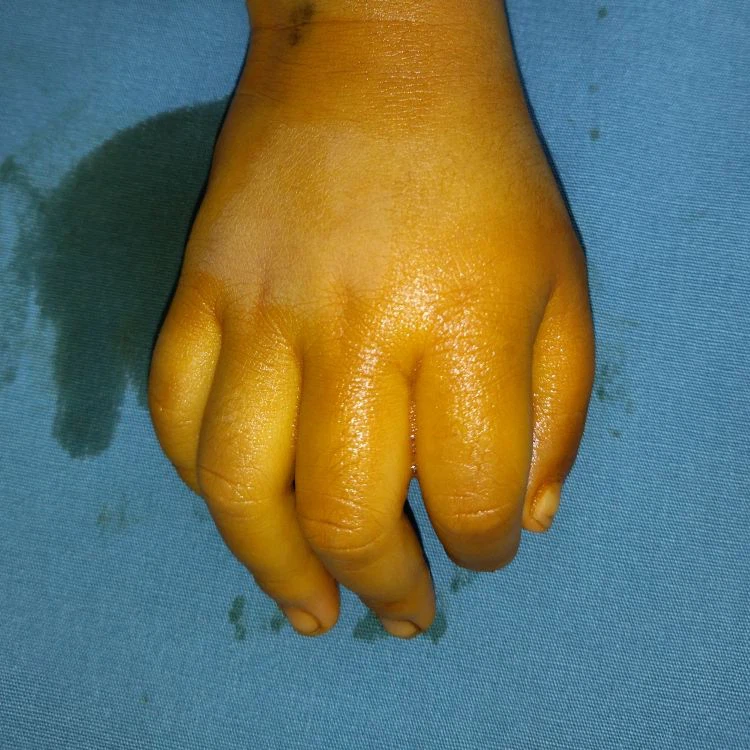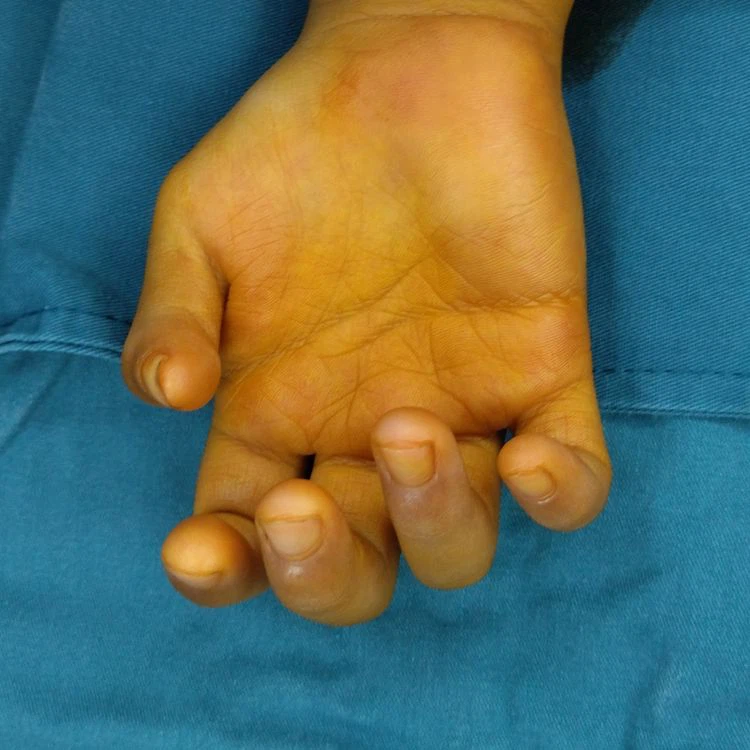Thumb hypoplasia, a less common congenital hand and foot malformation, is a condition characterized by underdevelopment of the thumb. The precise etiology of thumb hypoplasia is not yet fully understood, but it is believed to be associated with factors such as nutritional deficiencies, fetal neurogenic injuries, maternal viral infections, medication use (especially sedative thalidomide), and hypoxia.
Â
Thumb hypoplasia refers to the condition where the development of the thumb is adversely affected during the growth process. As a result, the affected thumb may exhibit reduced functionality compared to normal fingers. In some cases, it may even be entirely non-functional, appearing smaller, shorter, and thinner than typical fingers. Thumb hypoplasia can be categorized into five types based on the degree of anatomical abnormality and appearance of the thumb. Different types of thumb hypoplasia require varying treatment approaches. Type I thumb hypoplasia has a relatively minor impact on function and may not necessitate treatment. Type II thumb hypoplasia requires tendon transfer treatment. Type III and IV thumb hypoplasia can be managed based on patient needs, with options including index finger pollicization, partial metacarpal reconstruction, and metatarsal reconstruction. Type V thumb hypoplasia can only be treated through index finger pollicization.
Â
Among the five types of thumb hypoplasia, Type IV presents the greatest surgical challenge, particularly in cases of floating thumb preservation surgery.Currently, we employ the technique of partial metacarpal reconstruction of the second metacarpal bone to rebuild the first metacarpal. The surgery is exclusively performed on the hand. The research indicates that after half-palm bone transplant reconstruction, the probability of bone absorption and necrosis is lower compared to metatarsal bone reconstruction. Moreover, both the donor and recipient areas for bone harvesting can continue to grow postoperatively.
Â
In general, the optimal time for treating thumb hypoplasia is typically around 6-12 months of age for a child. At this age, the child's fingers are more malleable, and the surgical wounds are smaller due to the child's young age.
Â



Â
http://www.drchenjianghai.com/






 E-mail:
E-mail: 